Discovering Scarperia: The Art of Blades and Tradition
A day in the heart of Mugello exploring timeless craftsmanship, from masterful knife-making to Tuscan culinary traditions
When you think of Tuscany, the mind immediately jumps to Florence, Siena, or the rolling hills of Chianti. But tucked away in the heart of Mugello, Scarperia offers a completely different experience—one steeped in craftsmanship, history, and authenticity. This is the Tuscany that has remained quite untouched by mass tourism, and a day here will allow you to dive deep into its artisanal heritage.
Mugello is one of the least known parts of Tuscany, yet Florentines have long prized it as the perfect escape from their city’s unbearable summer humidity. They come for the clean air, country walks, and genuine food found throughout its hills, valleys, and mountains. Vasari, a Renaissance painter, architect, and art historian, called this area the garden of Florence.
So how does it happen that a remote town in one of the wildest areas of Tuscany has become the capital of knife-making through the centuries? As with everything remarkable that happened in Tuscany in the Renaissance time, the Medici family are somehow involved.
The history of Scarperia and its relationship with the knife-making craftsmanship
Founded in 1306 by the Republic of Florence, Scarperia was built as a fortified citadel that could protect Florence from attacks from the north, at the foot of the Tuscan-Emilian Apennines.
In the 15th century, the Medici transformed the fortified citadel into a vicarage and offered incentives like pardons for minor offenses and a 10-year tax exemption to attract new settlers in Scarperia, a town that was also strategically positioned to control the important trade route between Florence and northern Italy. Shops, hotels, and taverns were now numerous, and the village's renowned craftsmanship specialized in ferri taglienti, or cutting tools, so that over the centuries, the town became synonymous with the production of knives.
Scarperia lacked coal, iron, and a river—key elements for knife-making—but overcame the lack of natural resources thanks to its role as a staging post. Here, coal and iron could easily be procured from passing merchants, and finished products could be sold. The final challenge, energy, was solved by the recent invention of an ingenious machine called la stella (the star), which provided the power needed for knife production.
In Scarperia, the local artisans started to produce inexpensive pocket knives for those who could afford very little. These knives were so efficient that they gradually put an end to local knife production in other parts of Italy. The cutlers in Scarperia, though, were so skilled that they managed to preserve the historical memory and kept the production of the other Italian models alive. Each model was born from the meeting of a specific need and the skill of an artisan: just as every town has its own type of bread, the same was true for knives.
In the 1700s, the Lorena family opened the Futa Pass, in the Tuscan-Emilian Apennines, and many merchants began to use this new route. This shift led to a decline in activity and marked the beginning of Scarperia's downturn. This led to a decrease in the number of artisans, a pattern that would repeat again after both World Wars. One of the reasons for the decline in knife production in Scarperia was also the Giolitti Law of 1908, still in force today, which regulated the production and carrying of knives, particularly regarding blade size.
The crisis flared up in the 1980s when Scarperia was still producing inexpensive knives for those with limited means. Their sturdy, affordable, sharp knives put them in competition with Chinese makers.
In the 1990s, the cutlers of Scarperia realized that a way to overcome the crisis was to produce functional knives while emphasizing their history, tradition, and quality, shifting the attention toward the intangible values of the product: the pleasure of holding a well-made knife, for instance, as well as the importance of the work and craftsmanship behind it.
Today in Scarperia, only six producers remain out of the 120 artisan workshops that once existed. Of these six, only two family-run businesses—Coltellerie Berti and Consigli—manage the entire production, using methods that are still very similar to those of the 19th century, and continue to uphold the legacy of handmade knife production.
The art of knife-making at Coltellerie Berti
Our main destination in Scarperia was Coltellerie Berti, a family-run business founded in 1895. Visiting their workshop is like stepping into another era, where the past and present seamlessly intertwine.
Behind Berti’s fascinating showroom and knife museum, the artisans were at work on the knives, each blade going through a meticulous 48-step process to ensure it’s not just a tool but a piece of art. Since most of the work is still done by hand, each knife is unique, as befits an artisanal product.
Unlike mass-produced knives, in almost all Coltellerie Berti product lines a single artisan starts and finishes the entire knife: each knife is then signed by the artisan who crafts it with their initials engraved on the blade, a testament to their commitment to quality.
Walking through the Coltellerie Berti production lines, we learned how a knife is made of two essential elements: the blade and the handle.
Blades can be forged or laser-cut. If in the past it was believed that a forged knife was superior to one cut by laser, today they have the same durability and quality, both immediately evident from the moment you hold the knife—the balance, the weight, and the comfort of the grip all contribute to the pleasure of using a well-crafted tool.
As for the handle, they offer three options: wood (olive, boxwood, ebony), horn (ox, or buffalo), or PMMA (polymethyl methacrylate, also known as plexiglass). In the latter case, it is still an artisanal process because the material is worked by hand. Horn is the most expensive material, as only the tip of the horn is used for the finest knives, meaning that each horn yields only one knife handle.
After our visit, we selected the knives that are now the essential tools of our cooking classes.
Next to the essential kit—a chef's knife (the longer, the better, as it should be at least twice the size of what you need to cut), a serrated bread knife, and a paring knife—I got also a Japanese-style Nakiri knife for vegetables, my absolute favorite piece, a slicing knife for my roast meat, and a curved paring knife.
If you love witnessing the production of an artisanal tool such as the Berti knives, you can book a visit to Coltellerie Berti, and see how a piece of craftsmanship is still created by the talent of local artisans.
Where to eat
After soaking in the artisanal expertise at Coltellerie Berti, we stopped for lunch at Fattoria Il Palagio, a restaurant that perfectly embodies the spirit of Mugello's cuisine, offering traditional dishes that highlight seasonality and local ingredients.
Bordering the Emilia-Romagna and Florence, Mugello bears the influences of both its neighbors in its cuisine, reinterpreting them with the help of local products like potatoes, chestnuts, mushrooms, meat and game, milk and cheeses.
We feasted on their signature Florentine T-bone steak1, pappa al pomodoro, a platter of fried vegetables, and cannellini beans, all accompanied by a glass of local Pinot Nero. Yes, Pinot Nero, not the wine you would expect in Mugello, a region more known for its rustic fare than refined wines. Pinot Nero has now found a niche here, benefitting from the cool climate, clay soils, and significant temperature variations.
More options:
Stop by Osteria Passaguai in Borgo San Lorenzo, a restaurant, enoteca, cocktail bar, and deli, for a panino, a couple of crostoni, a charcuterie and cheese board, and colorful salads, everything made with local high-quality products.
Have an ice cream at Gelateria Fiocco di Neve in San Piero a Sieve, where the gelato is made with high-quality, seasonal ingredients.
Strolling through Scarperia's historical center
The afternoon was dedicated to a walk through the Scarperia historic center. Walking through its cobbled streets, you can feel the town's history echoing in every corner, the atmosphere calm and unhurried, far removed from the typical tourist destinations. The heart of the village reveals its medieval past, with fortified walls and the majestic Palazzo dei Vicari standing tall as a reminder of the town’s noble origins
Palazzo dei Vicari offers a glimpse into the town’s governance during the time of the Medici. Inside, frescoes and antique furniture tell the story of a town that once played a crucial role in Tuscany’s political landscape.
In a new part of the Palazzo dei Vicari, there is the Museum of Cutting Tools (Museo dei Ferri Taglienti), inaugurated in 1999, where the centuries-old activity of the Scarperia makers of cutlery is documented. The museum offers an active visit through videos, educational panels, touch screen monitors, a video-audio guide, and a workbench where the visitor can try his hand at assembling the knife.
Have you ever visited a hidden gem in Tuscany or experienced a piece of artisanal history? I’d love to hear your stories. Leave a comment below and let’s share our love for the more intimate and authentic side of Italy.
An exciting collaboration announcement
I used to think I had good knives, then I started using Coltellerie Berti knives in my everyday cooking and during our classes and I must confess that the experience of cutting, slicing, peeling, and dicing has taken on a whole new meaning and pleasure. My students now love the moment when we start prepping all the vegetables, as they recognize the pleasure and ease a good knife gives.
So I’m thrilled to announce our new collaboration with Coltellerie Berti: in each class, we are now using their beautifully crafted knives. Every student will have the opportunity to experience firsthand the precision and craftsmanship that goes into each blade.
Special Offer: Bring a piece of Scarperia tradition to your kitchen!
Excited to add a touch of authentic Tuscan craftsmanship to your cooking? We’re proud to announce that, as a special treat for our readers, you can now purchase artisanal knives from Coltellerie Berti with an exclusive 20% discount. These handcrafted knives, made by the skilled artisans of Scarperia, are not just tools—they are pieces of history, tradition, and artisanal quality.
Don't miss out on this opportunity to elevate your kitchen experience with these remarkable knives. Click below to claim your discount and bring the spirit of Tuscany into your home! They ship worldwide, and remember that Christmas is coming! ;)
Did you know that the right steak knife is not serrated but has a smooth blade? The serrated knife should be used only for bread, pizza, tomatoes, and citrus fruits (although a well-sharpened paring knife is always the best choice also for tomatoes and citrus fruits).




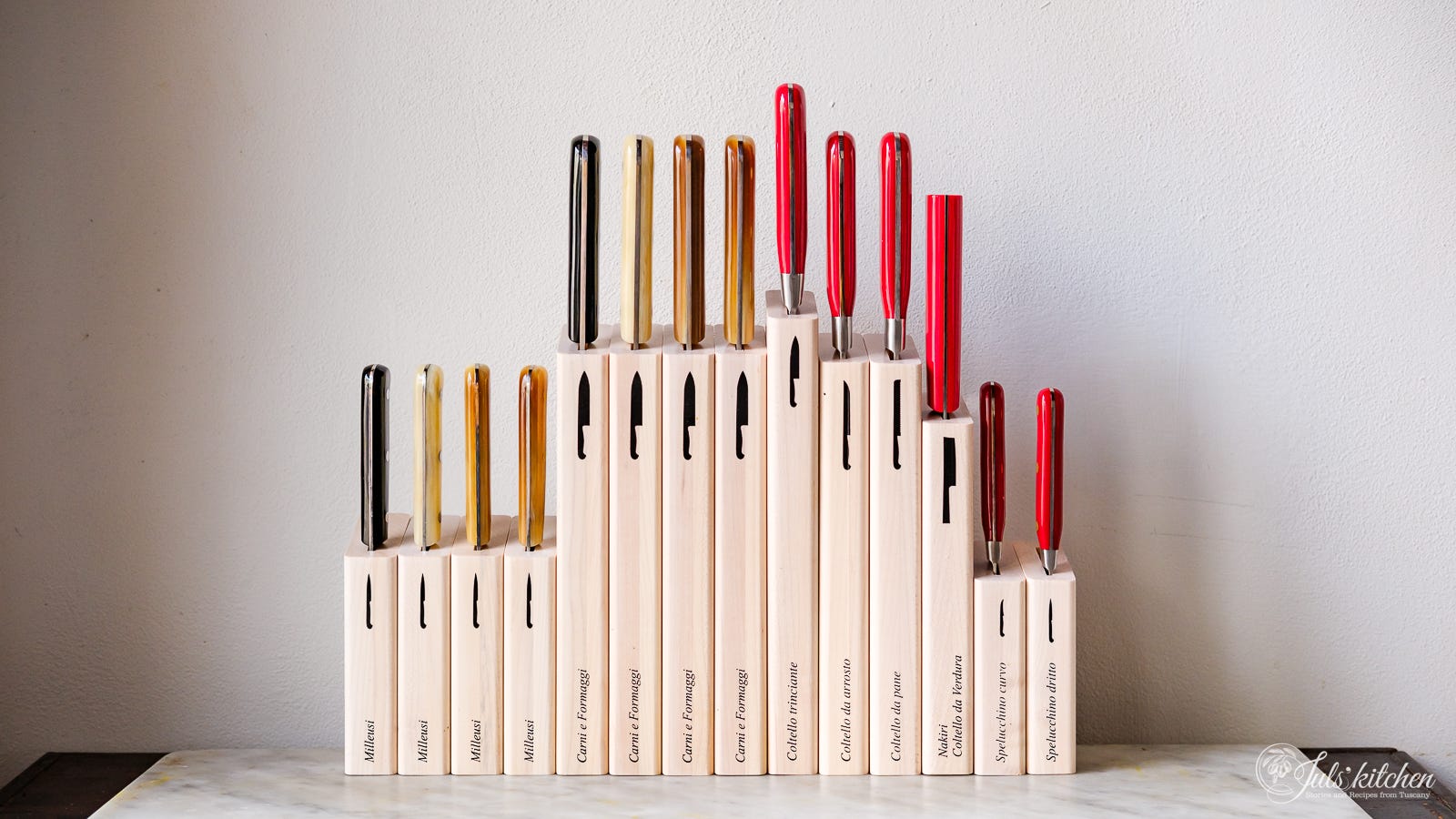
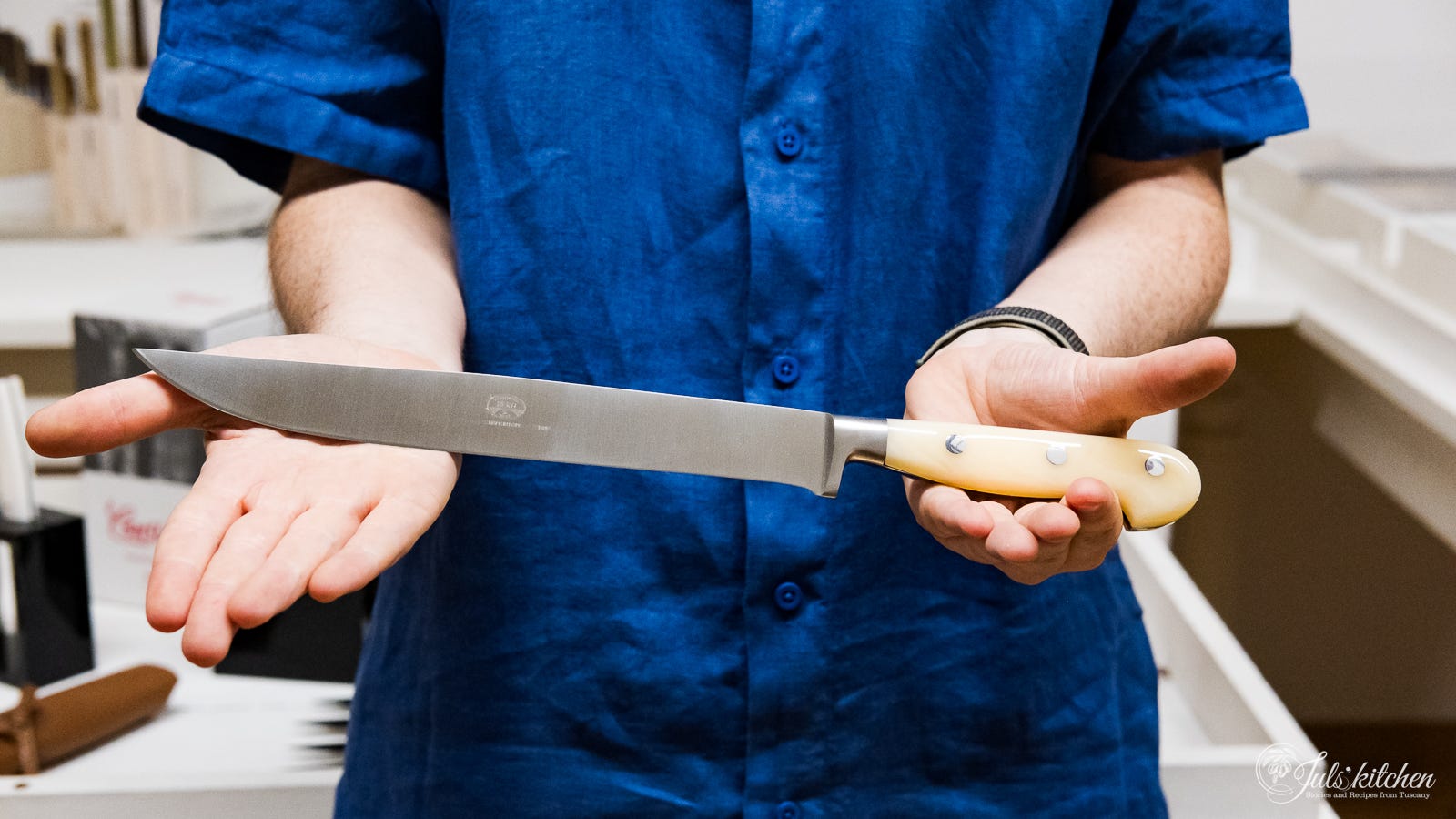
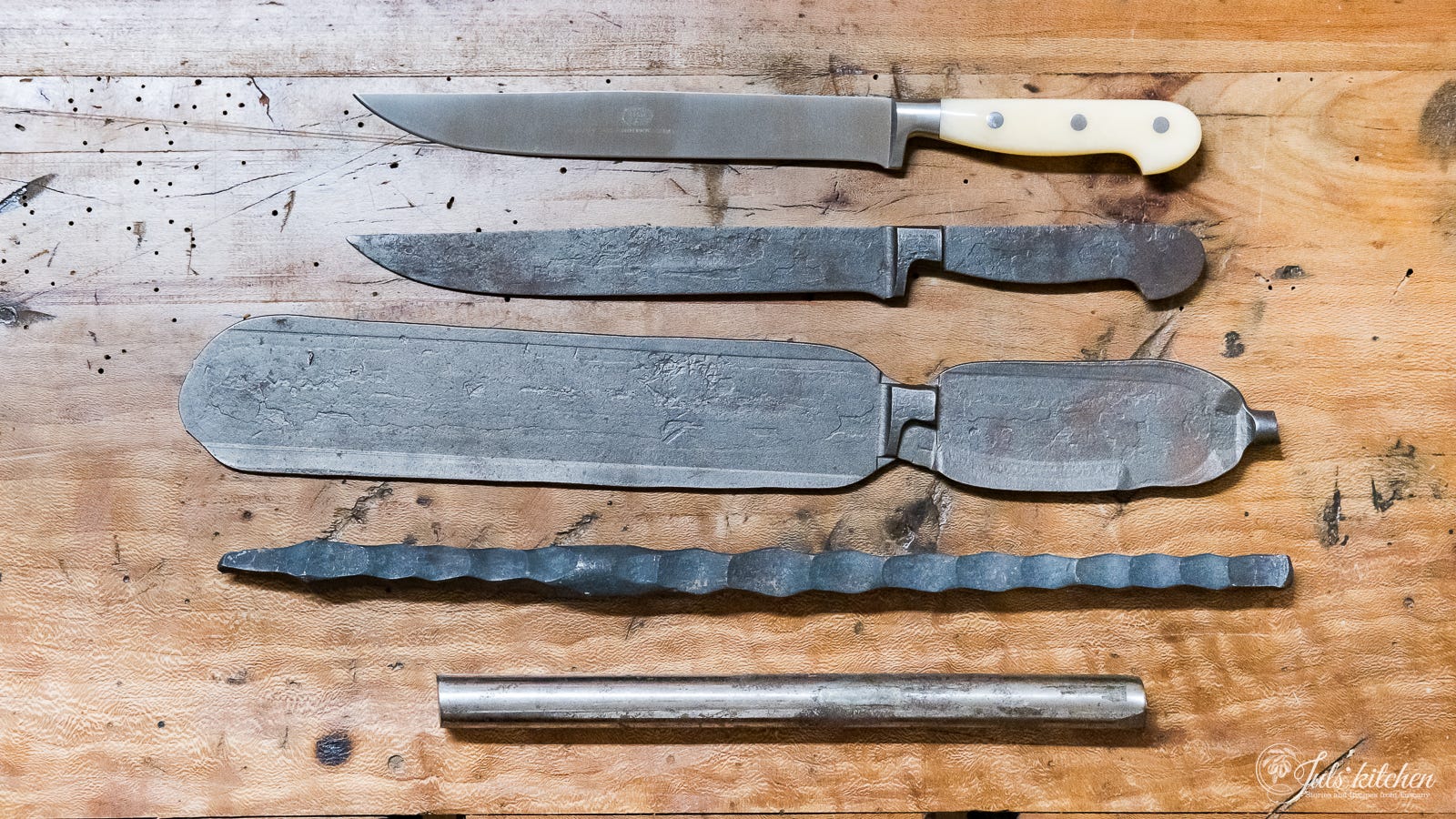
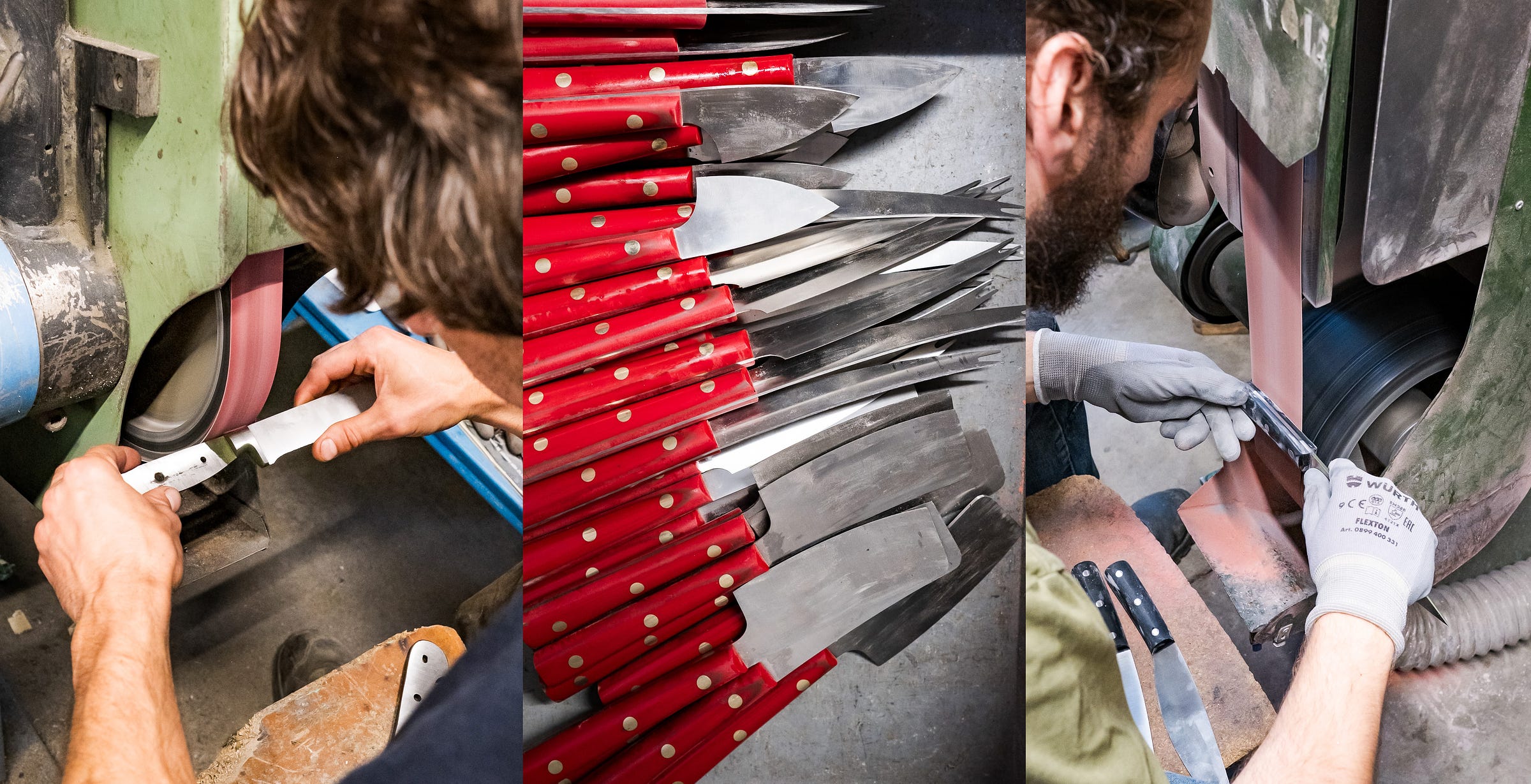
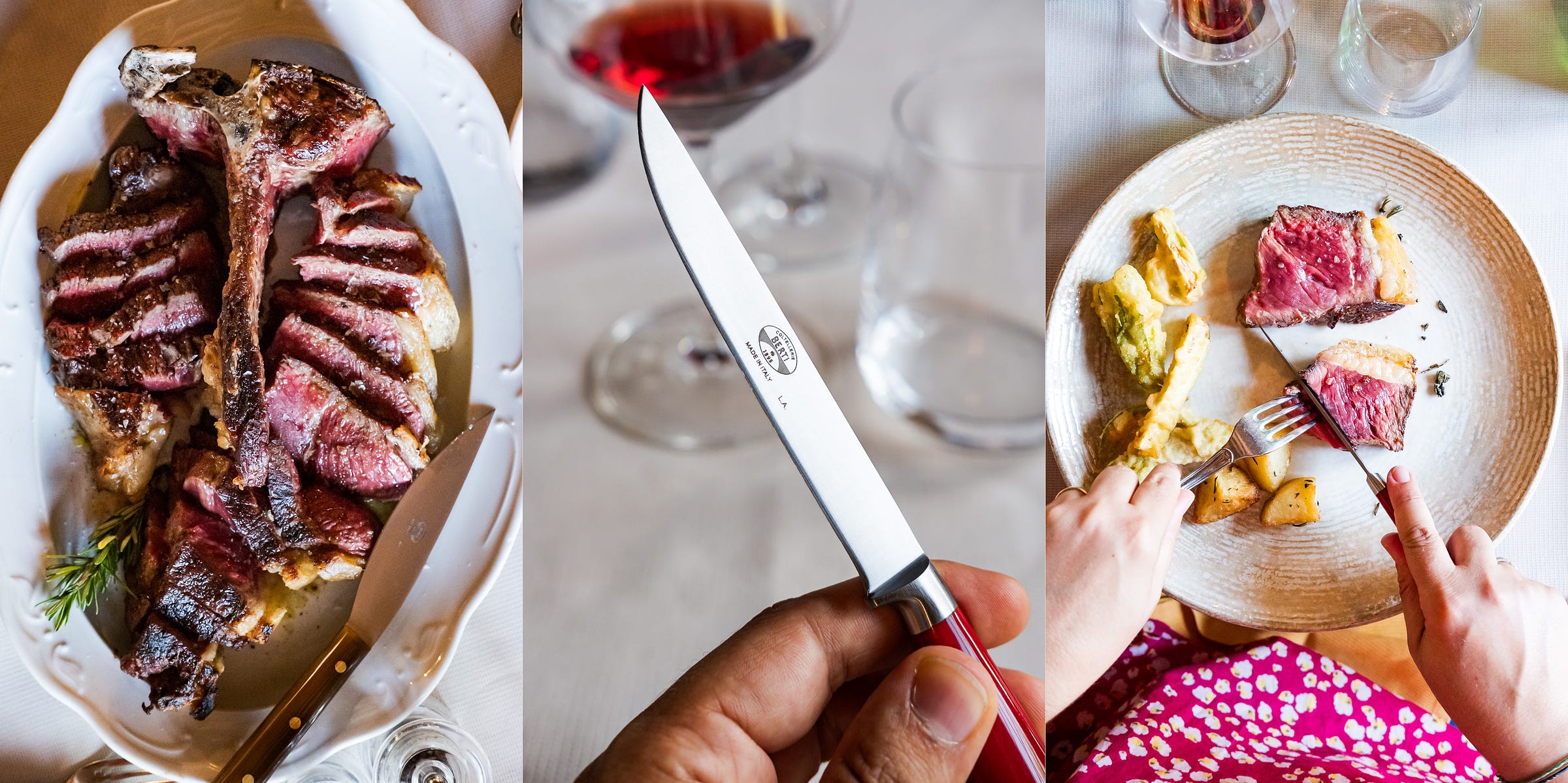
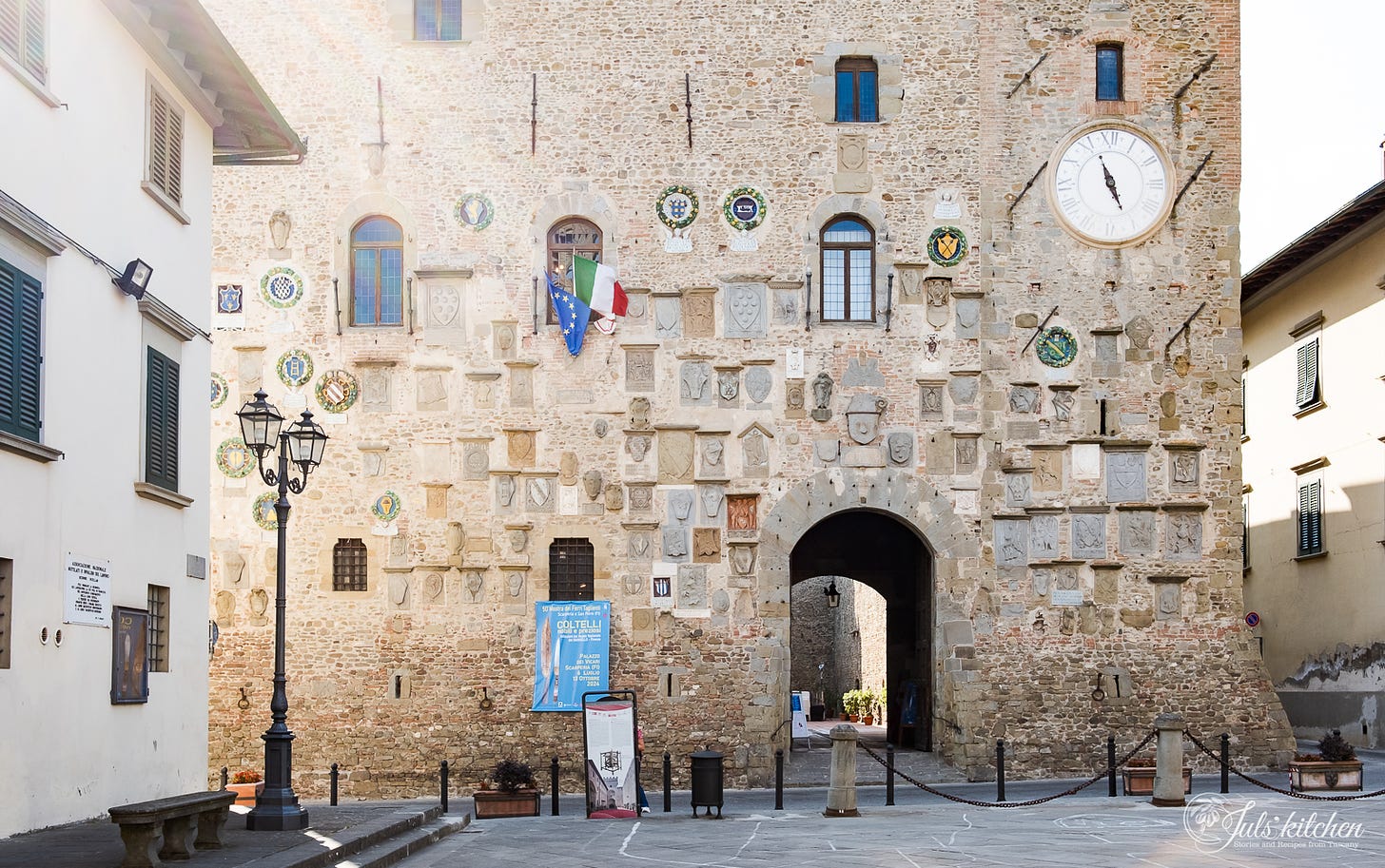
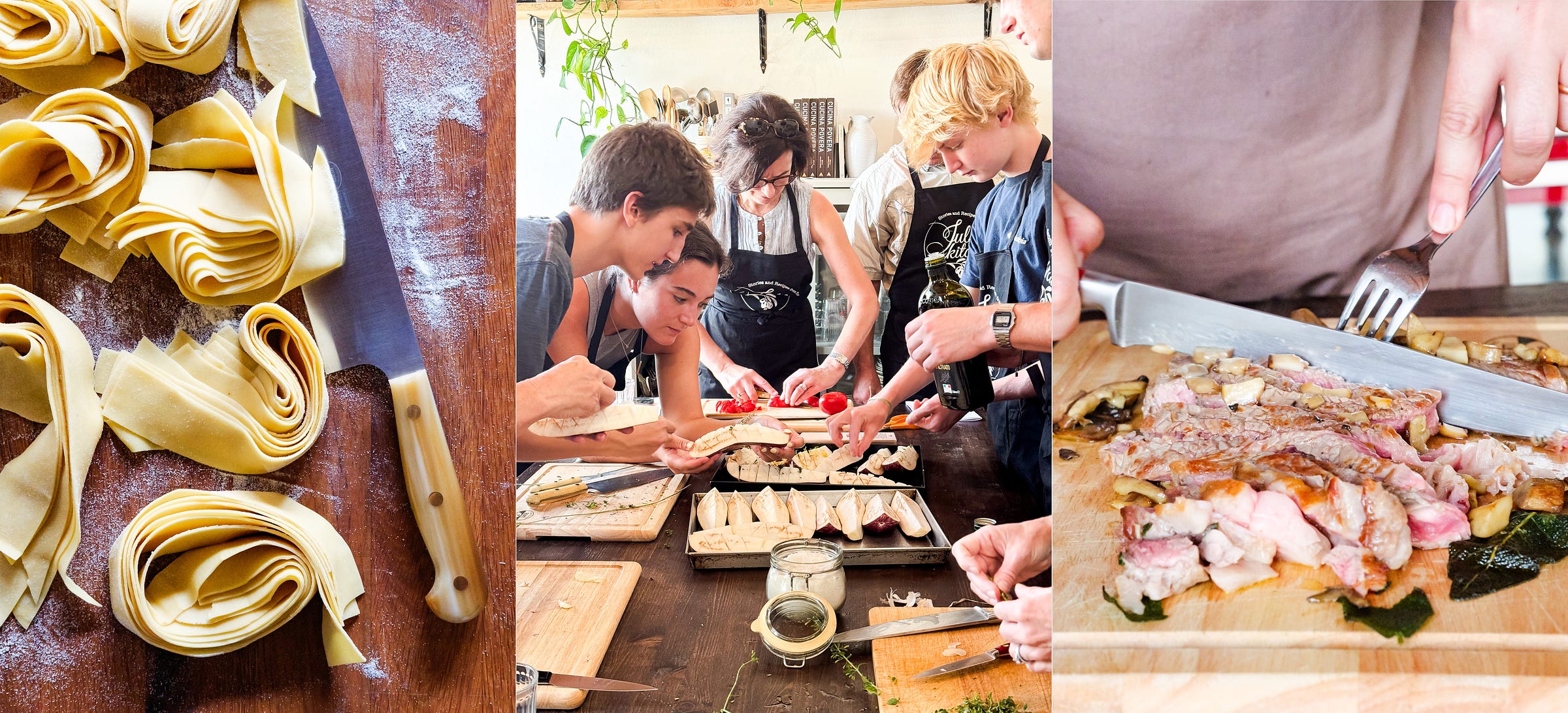
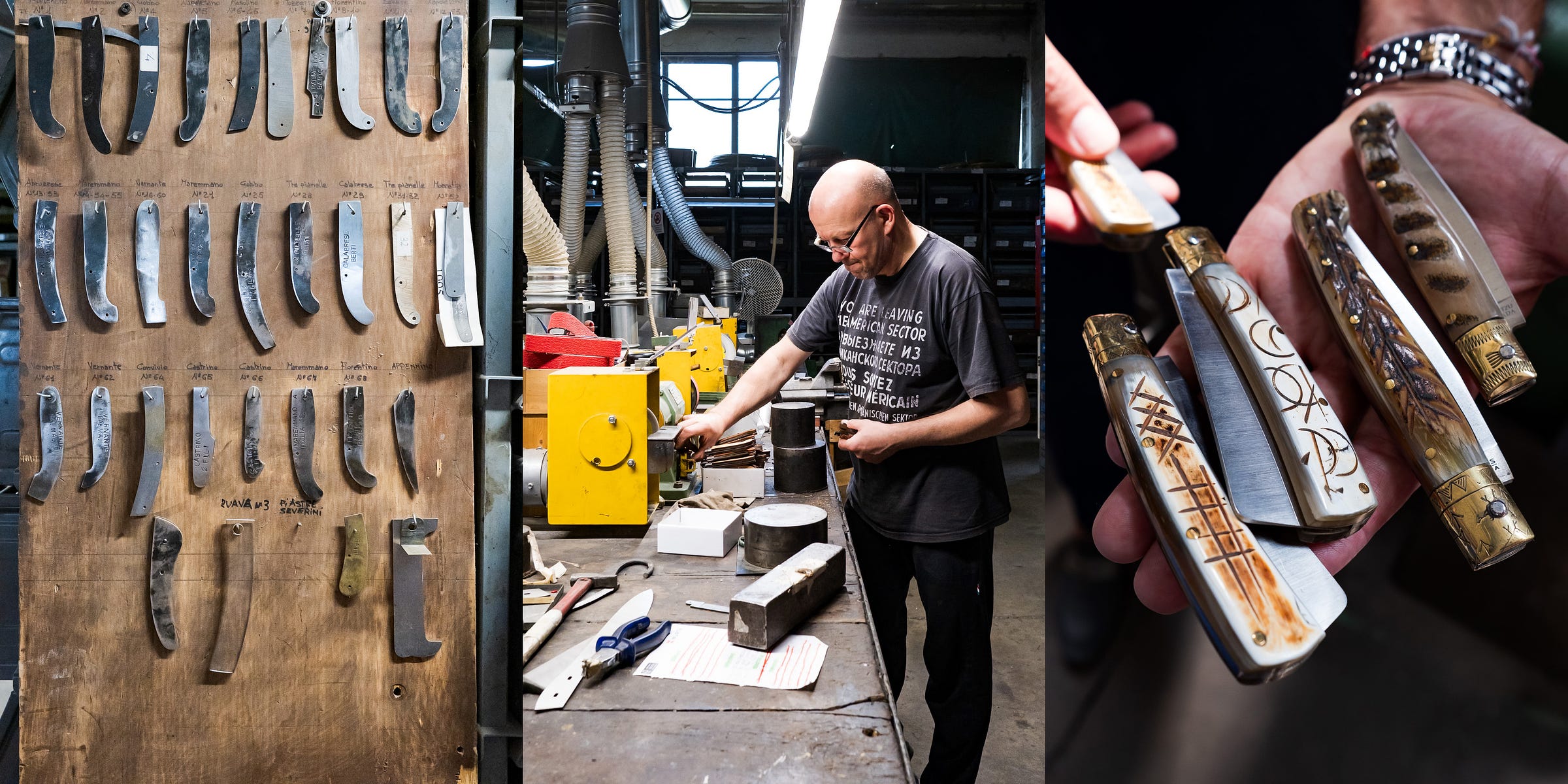
Love the article as a Chef you can never have enough amazing knifes! I also purchased your book “Cucina Povera” lots of lovely recipes.
Hi Guilia, you always make me want to return to Italy, there was so much we didn’t see when we visited so many years ago. My favourite place to dine in Tuscany was in the small town of Certaldo, our friends questioned why I wanted to go there, but a recommendation by a true Italian took us to Osteria de Vicario up in the old town. Such a wonderful experience. And to have a ‘great’ set of knives should be everyone’s desire to have in their kitchen, and I agree, absolutely NO to serrated knives for steak, if it is good enough the serration is not necessary, my husband on the other hand will use one to my absolute distain. I do not buy tough steak!!!